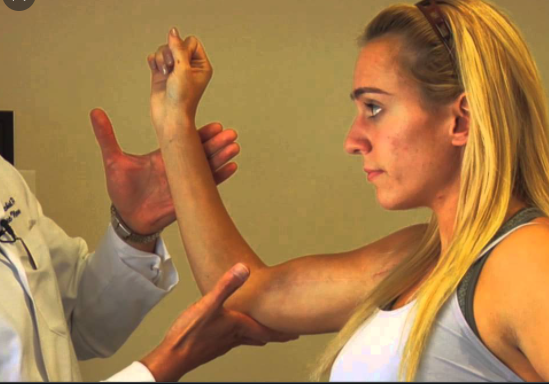
What are Burners and stingers: Brachial plexus injuries?
It’s a common sight during football season; a player leans in to make a regulation tackle and reels out of the contact holding their arm motionless by their side grimacing as the commentator points out another “burner” for the audience.
The burner is so common to many different types of athletes that many do not even report it to any sideline medical personnel and simply play on.
What does a burner feel like?
Unsurprisingly, the burner was named after the temporary burning, stinging pain, or tingling that radiates from the shoulder to the hand of one arm after injury. You may also feel numbness, paresthesias, or weakness in the affected arm. It is common for the pain and discomfort to resolve spontaneously in a couple of minutes.
But what is a burner aka stinger injury?
A burner AKA Transient brachial plexopathy or peripheral neurapraxia[1] is caused by trauma to the neck and shoulder, most commonly traction or compression of the upper part of the brachial plexus or of cervical nerve roots 5 or 6.[2]
If you are playing sports at the time of injury, it is critical for any on-field physician to distinguish a burner type injury from a cervical spine injury.
The burner is classified as a peripheral nerve injury and is often graded using Seddon’s classification, typically representing a grade I or II nerve injury.
How do burners occur?
Burners occur most often during tackling in rugby league and union, but have also been reported in wrestling, gymnastics, hockey, basketball, boxing, and weight lifting.
Three mechanisms of burners are known:
- The first is a traction injury to the brachial plexus, which occurs when the shoulder is depressed and the neck is forced laterally away from the involved side, stretching the brachial plexus[3]
- The second is a direct blow to the supraclavicular fossa, which causes a percussive injury to the upper trunk of the brachial plexus[4]
- The third is nerve compression by a combination of neck hyperextension and ipsilateral lateral flexion. This method has been observed as having the most persistent and severe symptoms from burners.[5]
If you suffer a burner, don’t put off seeing a sports specialist physio!
Although burners are common, the true incidence in each sport and at different levels of competition is uncertain, primarily because of underreporting by athletes.
One survey of American college football players found that although 65 percent of players had experienced at least one burner in their college careers; 70 percent did not report the injury to medical personnel.[6]
If you suspect you have suffered a burner, your physio will ask for detailed descriptions of your immediate and residual symptoms along with things like pain intensity, location, radiation, and duration and the presence of numbness or paresthesias.
Don’t let a burner become a recurring injury
Recurrent burners are rare in studies but have been associated with cervical stenosis and intervertebral disk disease in collegiate and professional athletes; in these players, neck extension and compression of the nerve roots within the intervertebral foramina results in repeated events termed the “chronic burner” syndrome.[7] Some players were not able to return to the same level of competitive play. The risk of nerve injury leading to permanent disability is unknown but assumed to be low.
How are burner injuries treated?
Most burner injuries are managed successfully with supportive care from a sports specialist physio and a rehabilitation program designed to regain range of motion, strength and flexibility in the area.
Preventive management consists of reducing future burner risk through coaching of proper technique and equipment modifications. Ongoing troublesome brachial plexus injuries may be theoretically reduced in football by improving the fit/shock absorbing quality of the shoulder pads and reducing motion at the neck.[8]
If you think you have suffered a burner injury, make an appointment at Lane Cove Physio on (02) 9428 5772 or send us an email at [email protected] to discuss your treatment options.
[1] Kawasaki T, Ota C, Yoneda T, Maki N, Urayama S, Nagao M, Nagayama M, Kaketa T, Takazawa Y, Kaneko K. Incidence of Stingers in Young Rugby Players. Am J Sports Med. 2015 Nov;43(11):2809-15.
[2] Sallis RE, Jones K, Knopp W. Burners: offensive strategy for an underreported injury. Phys Sportsmed 1992; 20:47.
[3] Hershman EB. Brachial plexus injuries. Clin Sports Med. 1990 Apr;9(2):311-29. PMID: 2183948.
[4] Markey KL, Di Benedetto M, Curl WW. Upper trunk brachial plexopathy. The stinger syndrome. Am J Sports Med. 1993 Sep-Oct;21(5):650-5. doi: 10.1177/036354659302100503. PMID: 8238703.
[5] Watkins RG. Neck injuries in football players. Clin Sports Med. 1986 Apr;5(2):215-46. PMID: 3955668.
[6] Sallis RE, Jones K, Knopp W. Burners: offensive strategy for an underreported injury. Phys Sportsmed 1992; 20:47.
[7] Levitz CL, Reilly PJ, Torg JS. The pathomechanics of chronic, recurrent cervical nerve root neurapraxia: the chronic burner syndrome. Am J Sports Med. 1997;25:73- 76.
[8] Kawasaki T, Ota C, Yoneda T, Maki N, Urayama S, Nagao M, Nagayama M, Kaketa T, Takazawa Y, Kaneko K. Incidence of Stingers in Young Rugby Players. Am J Sports Med. 2015 Nov;43(11):2809-15.



